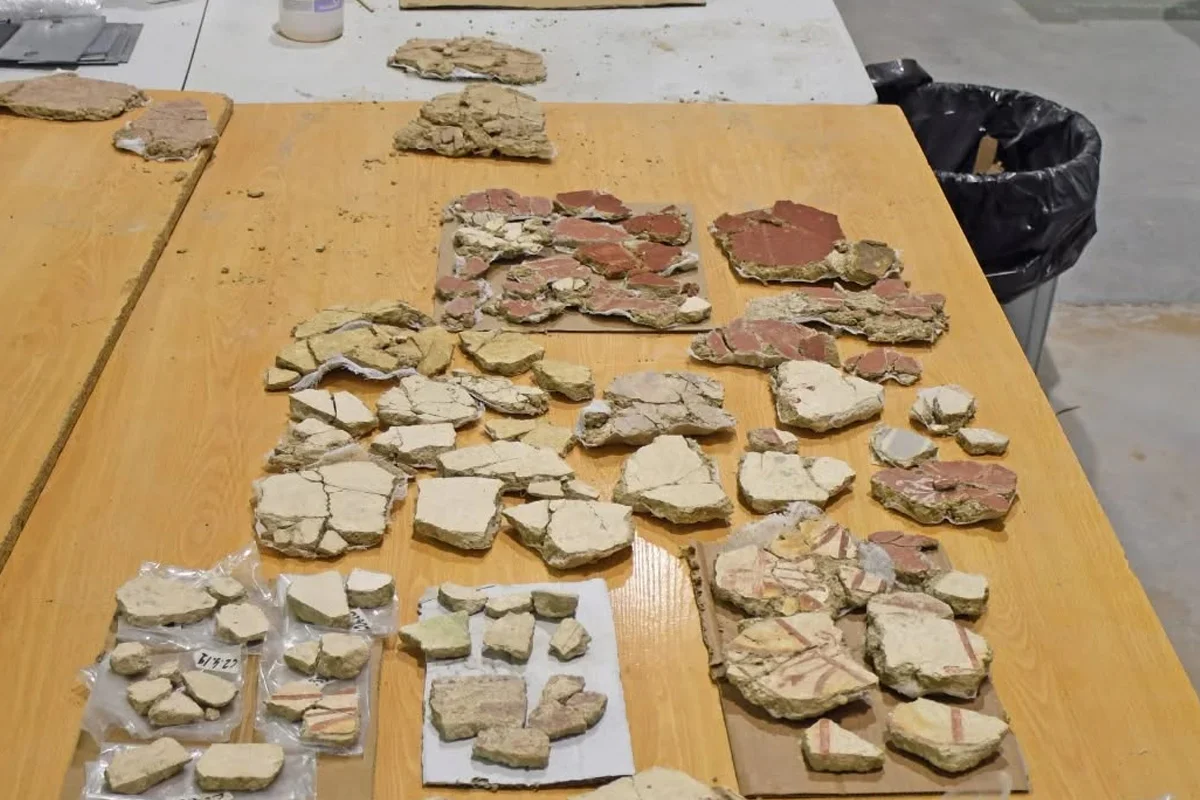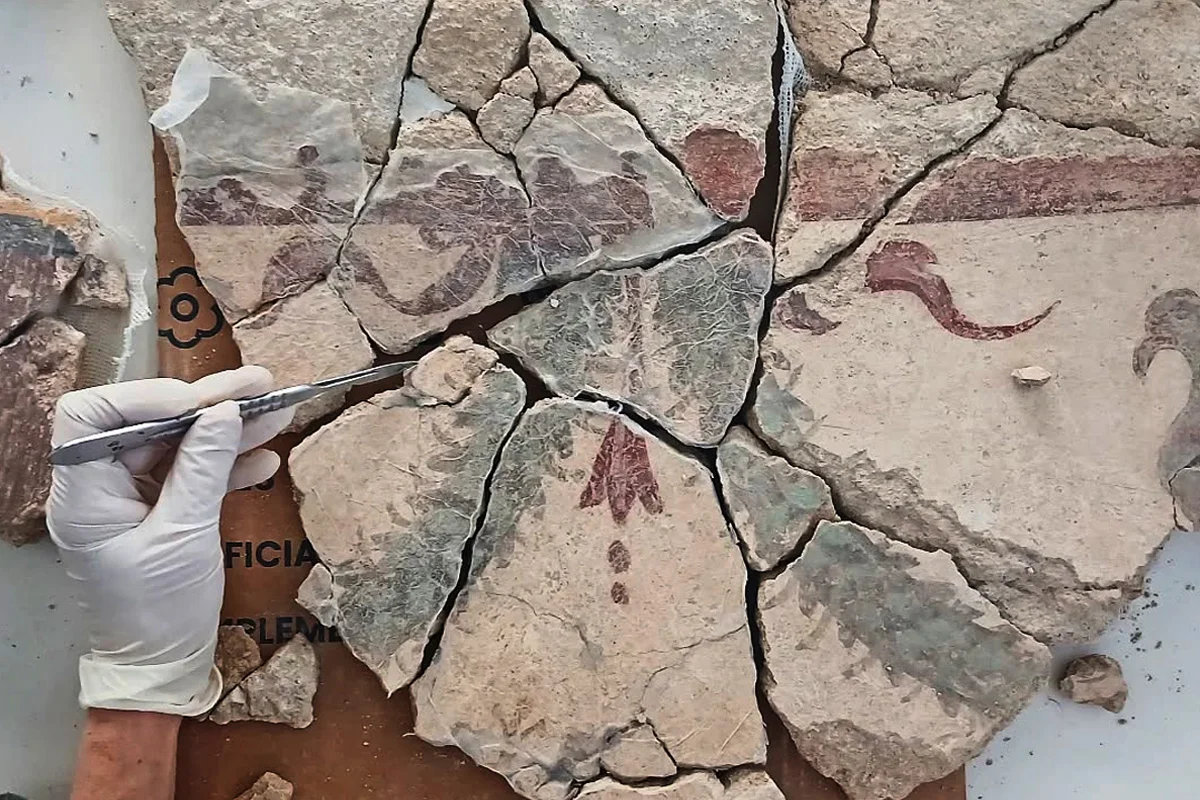Archaeologists excavating the Roman villa of Barberes Sud in Villajoyosa, Spain, have unearthed over 4,000 fragments of ornamental wall paintings.
The villa of Barberes Sud is located alongside a major highway that linked the Roman city of Alonis with the Marina Baixa region. While the urban centre of Alonis is yet to be determined, archaeologists propose that it lies under the Plaza de la Generalitat, Calle Colón, the historic old town of Villajoyosa.
Previous excavations have uncovered numerous Roman villa complexes, two large necropolises, and parts of a port known as the “Playa de la Vila,” which likely formed a major industrial and commercial hub of ancient Alonis.
Excavations at the villa of Barberes Sud have been conducted by the Alebus Historical Heritage Company and the Municipal Archaeology Service, revealing the villa’s foundations that date from the reign of Emperor Trajan (AD 98 to 117).

The villa complex consists of a courtyard or atrium with several rooms likely designated for servants, domestic spaces, and a spacious open-air garden, once enclosed by impressive columns and bordered by richly decorated reception rooms.
The walls of the reception rooms, constructed with rammed earth (compacted clay), appear to have collapsed inward, where archaeologists have unearthed over 4,000 fragments of decorative wall paintings.
Each fragment or group of fragments was carefully consolidated by the project’s conservation team. By numbering and recording each fragment using photogrammetry, archaeologists have been able to partially reconstruct the original paintings. In one panel, 22 of the 866 fragments recovered have already been reassembled, revealing vibrant plant garlands interwoven with birds and finished with an ornate moulding.
Among the other notable finds are fragments of curved stucco crafted to imitate fluted columns. These would have originally covered the large pillars that supported the colonnaded space around the villa’s residential garden, hinting at the impressive architectural style of this once-luxurious Roman home.
Header Image Credit : Vilamuseu
Sources : Vilamuseu





